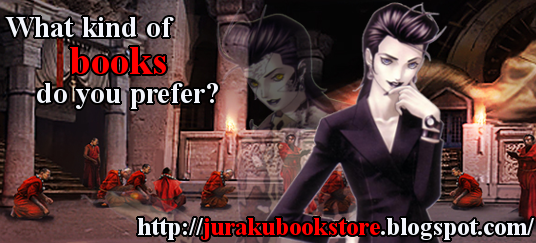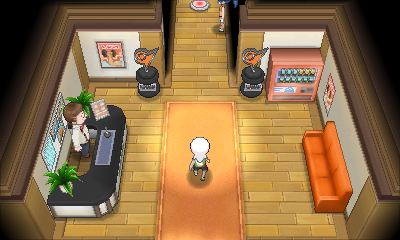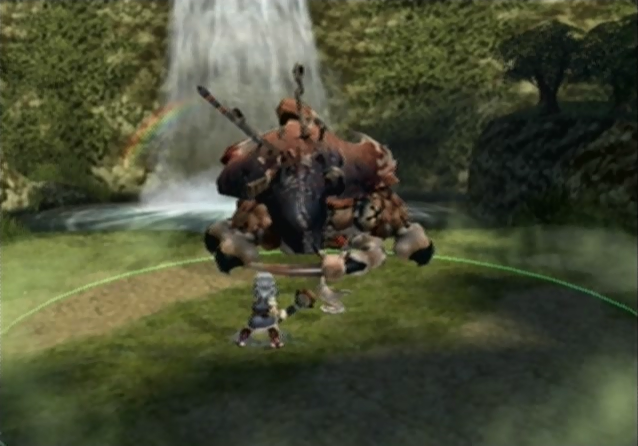I was a skeptic going into Alpha Sapphire. The game had a lot to stand up to, and it still does in my playthrough because I'm writing this thinking on what I've seen in the first three badges. In the first place, ΩRαS are remakes of very weak entries in the franchise. The only harder job would be to remake Diamond and Pearl, a task I still don't think Game Freak is up to. There is a preconceived idea of what Hoenn as a location is, what the games set in Hoenn represent and how they will play out. Ruby, Sapphire & Emerald were the first games in which the player was following a formula of acquiring eight badges, defeating an evil gang, becoming regional champion and catching legendary Pokémon to restore order to the world because "that's what you do in a Pokémon game." The franchise was a cliché in 2002, and it took years for it to recover from that image of being strictly formula. The first task for Omega Ruby & Alpha Sapphire was thus to overcome the preconception of Ruby & Sapphire.
The second task was to overcome the limitations artificially placed on the 3DS games by their developers. The lack of trainer customization was a swing factor for many players in whether or not they would buy into the latest Pokémon games, and regardless of Game Freak's other achievements with ΩRαS this is a step backwards. The creative strength of the Pokémon games is self-expression, and limiting a form of expression that fans have been clamoring for from day one (a form of expression that was the only selling point for Pokémon Battle Revolution, quite probably the biggest critical bomb in franchise history that still broke one million sales) is a self-destructive decision. There is reason to do it beyond Masuda citing Kalos' specific identity, namely that the clothes from X & Y can't be blanket applied to the player characters of Omega Ruby & Alpha Sapphire and so would require more development time to remodel, but in face of players being unwilling to buy the games based on customization not making the cut these aren't good reasons. Throughout my playthrough of X & Y my first priority in every new town was not to make a beeline for the gym as in past games, but to see what new fashions were available. It speaks volumes that the ultimate rewards in X & Y, a 2013 JRPG, are not some kind of ultimate sword, armor or those items' pocket monster equivalent, but clothes. Boutique Couture's hundred thousand yen blouses and jackets are the apex of material status in those games because one's visual appearance can be shared with others as a marker of their achievements. How much time do you think the world's elite Pokémon players spent picking a virtual outfit they felt comfortable in for the world championships?
What I was startled by was how ΩRαS applied itself to these tasks. Certainly, some locations lost their significance in the transition from 2D sprites to a 3D plane, with the once-dazzling water effects surrounding the bridge on route 104 coming off as lame in the remakes. But in other areas, ΩRαS is more alive than its predecessors. The gyms are exemplary of this; in RSE the Rustboro city and Dewford island gyms are abstract spaces in which Pokémon battles take place because you need to beat eight gym leaders to earn eight badges to get into the Pokémon league and prove that you are The Very Best There Ever Was. There is no sense of place about why you are there or what kinds of spaces these are. What purpose does a gym serve? Why are they created, why do people wait in them all day fighting every person they lock eyes with, who stands around in the dark on an island worshiping the very ground some beach bum with Fighting-type Pokémon walks on? They are no better than the castle dungeons and evil overlord palaces of medieval fantasy RPGs. What ΩRαS does is inject these dungeons with place. Roxanne's gym is a fossil museum with a secondary purpose for the public, an extension of the Trainers' School that does something other than host a boss battle. Brawly's gym is more clever, being an actual work-out club with a reception lobby, stairclimbers, yoga mats and a working vending machine next to the trainer certification listings. Wattson's is easily the most abstracted of the gyms because it's obviously the workings of a bored old electrician fooling around in his retirement, but compared to the other gyms this has an effect of giving Wattson more character.
Those are only the modifications made to the gyms. Granite Cave now serves a much stronger purpose in advancing the storyline. Instead of just introducing Steven arbitrarily the caves foreshadow the rise of Groudon and Kyogre, and the wall murals hint at the ideas that Archie (or Maxie in Omega Ruby) will espouse not long after in Slateport city. The dialogue has been carefully rewritten to carry a greater symbolic weight. Archie seeks to "return everything to its unspoiled beginnings" and Kyogre's mural depicts it with an α carved into each arm, the oceans now embody the origin of all life and the land its terminal destiny. There is a palpable conflict between the harmonious primordial forms of life beneath the sea, and the chaotic land-dwelling life that is struggling to break into the heavens and reach for space.
Ever since Black & White, Pokémon has been on the ascent. The legacy of Ruby, Sapphire & Emerald as the slow death of the franchise and the destruction of Gold, Silver & Crystal's golden age has been shattered. At the moment those games hit internationally in 2011, the veil was torn from top to bottom. Black & White were the best Pokémon games ever. Black 2 & White 2 were the best Pokémon games ever. X & Y were the best Pokémon games ever. Omega Ruby & Alpha Sapphire are the best Pokémon games ever. Any opposition to this view is easily dismissed as the counterfactual nostalgia of genwunners. ΩRαS has taken some steps back, but every step back is accompanied by ten forward, by the tempering revisions. Alpha Sapphire strikes me as something unique in Pokémon history, a polished second draft that fully surpasses its former self in every regard, far exceeding the nebulous accomplishments of the third and fourth generation games. You can easily tally the number of video game remakes that pile content over content like some bad fanfiction given life in RPGMaker, but it is comparatively rare to see video games that cut content that needed to be cut. The Granite Cave mentioned before has been revised. Steven is now accessible directly from the ground level. The darkened lower floors that players need the Flash move to light up are now optional, pushed to the side behind a special road they need the bicycle to access. The one-note town of Mauville city has been cut entirely and replaced with a new multistory underground mall/apartment complex that reinvisions Mauville as a metropolitan society. There is concision and flow to the environment and narrative of Alpha Sapphire that wasn't there in vanilla Sapphire. Effectively the process that Red & Blue started which was carried over to Gold & Silver was resumed eleven years after by Black & White, and the torch has continued to be passed up to Omega Ruby & Alpha Sapphire. The legend of Gold & Silver is almost out of sight, and once it's gone Game Freak will no longer have its legend to live up to--they'll have written a new legend.
The imminent question is of when the golden goose will stop laying. Nintendo's old anniversary Game Boy commercial made some inadvertent commentary on just what Pokémon was doing for the company, and the sudden end to Pokémania was not taken lightly. In the past it only took one generation to discredit the entire franchise as the passing fancy of small children. Whatever follows Omega Ruby & Alpha Sapphire will only either carry the torch for another year to come, or discredit the games once again. There's virtually no other path for such a polarizing series. Whether what follows is
There are some things I doubt ΩRαS will ever live down. Maxie and Archie's baby boomer redesigns, including the bad glasses and campy Sentai villain outfits, are just the tip of the iceberg. Hoenn is a region without clothes. The act of carting around a Zigzagoon (nicknamed Pickup) that knows Rock Smash, Cut and soon Surf, is an activity I never missed and will be glad to say goodbye to. Yet if such concessions come in exchange for a cohesive work that approaches a literary quality and advances the medium, then these casualties of development can be written off as acceptable losses.
(And speaking of cutting, the first chapter of Pokémon Blue is currently sitting at 6500 words and I'm agonizing over where to partition the beginning of the second chapter and what to trim from the first.)













